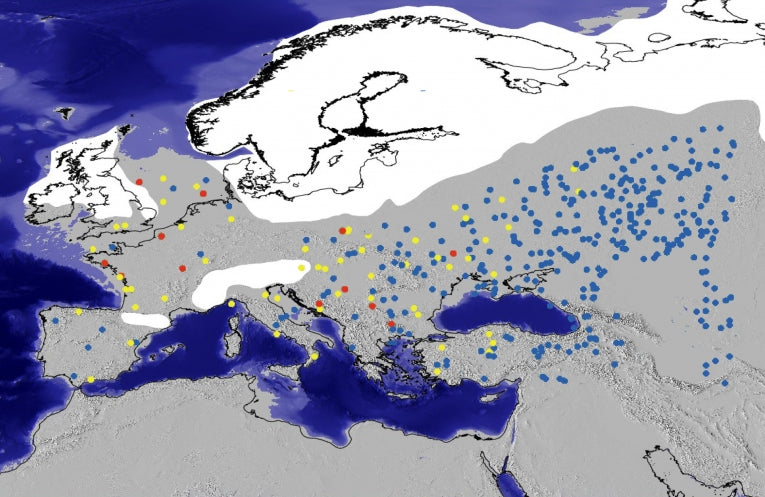Thanks to increases in computer power it is now possible to produce computer models that were previously impossible. Recent computer modelling that has looked at evidence of Hominin groups has given new insights how these groups evolved and coped with climate change during the last Ice Age.
Michael Barton is a pioneer in archaeological applications of computational modelling at Arizona State University. He said, "To better understand human ecology, and especially how human culture and biology co-evolved among hunter-gatherers in the Late Pleistocene of Western Eurasia (ca. 128,000-11,500 years ago) we designed theoretical and methodological frameworks that incorporated feedback across three evolutionary systems: biological, cultural and environmental," he continued, "One scientifically interesting result of this research, which studied culturally and environmentally driven changes in land-use behaviours, is that it shows how Neanderthals could have disappeared not because they were somehow less fit than all other hominins who existed during the last glaciation, but because they were as behaviourally sophisticated as modern humans."
The paper was co-authored by Julien Riel-Salvatore. He is an assistant professor of anthropology at the University of Colorado. On the report he said, "It's been long believed that Neanderthals were outcompeted by fitter modern humans and they could not adapt, we are changing the main narrative. Neanderthals were just as adaptable and in many ways, simply victims of their own success."
The team researched an enormous amount of data that covered changes over a period of one hundred thousand years. This data showed that mobility increased with time and that this is more-than-likely down to environmental changes that meant the groups needed to move to new areas in order to find food and to survive.
The team used computer modelling to look into the consequences that these changes would have and how these movements and changes possibly led to a change in how groups interacted with each other and even interbred with each other. In general, the research showed that Neanderthals were a lot more resourceful and capable of changing to conditions that had been previously expected.
Riel-Salvatore said, "Neanderthals had proven that they could roll with the punches and when they met the more numerous modern humans, they adapted again, but modern humans probably saw the Neanderthals as possible mates. As a result, over time, the Neanderthals died out as a physically recognizable population."
In order to come up with this result the team ran a computer program as part of their research. This program analysed the equivalent of 1,500 generations which showed that Neanderthals were slowly absorbed by more and more modern humans until eventually they faded out completely.
"We tested the modelling results against the empirical archaeological record and found that there is evidence that Neanderthals, and moderns, did adapt their behaviours in the way in which we modelled," explained Barton. "Moreover, the modelling predicts the kind of low-level genetic admixture of Neanderthal genes that are being found in the newest genetic studies just now being published. "In other words, successful behavioural adaptations to severe environmental conditions made Neanderthals, and other non-moderns about whom we know little, vulnerable to biological extinction, but at the same time, ensured they made a genetic contribution to modern populations."
The findings were published in Human Ecology. There was partial support from the National Science Foundation, a Fulbright Senior Research Fellowship and also a Fullbright Graduate Student Fellowship. The research shows some interesting insights and shows that we had previously underestimated our ancient cousins.















